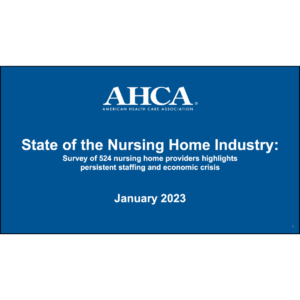Use These Strategies to Resolve Conflicts in Your Senior Care Facility

Anne Llewellyn MS, BHSA, RN – BC, CCM, CRRN, RN, CMF
Anytime multiple staff members with different personalities and work methods need to work together, there’s a chance for conflicts to arise. Given the stress levels common in senior care settings and the current staffing challenges, it’s even more likely for conflicts to occur. Adopting effective conflict resolution strategies can help senior care organization management to lead teams and create a supportive, healthy workplace environment.
Why Effective Conflict Resolution Matters
Conflict resolution is essential in any workplace setting, but it’s particularly important in the senior care industry. Anne Llewellyn, MS, BHSA, RN-BC, CCM, RN, CMF, has experience as a nurse, case manager, and nurse advocate. She now runs the weekly blog, Nurse Advocate. Llewellyn explains that in senior care, it’s important to find the best solution that benefits everybody involved, including the staff and residents. “That conflict needs to be addressed, investigated, and worked through to a resolution, so things can go forward,” she says.
Conflict Resolution Best Practices in Senior Care
Llewellyn notes that when it comes to addressing conflicts among staff, lack of communication is often a major mistake. Similarly, when different parties have different goals, it can be difficult to identify the actual conflict and to arrive at a solution. For example, administrators might be looking at financial goals, while staff are focused on the quality of care offered to residents. The people involved might see a conflict, but they could be actually seeing different issues.
Effective conflict resolution starts with improved communication, Llewellyn notes. “Talk to your staff, find out what’s happening on the floors, and help staff feel valuable,” she says. That sense of staff value is essential, but it often goes overlooked. “Saying thank you is a big thing, and it can go a long way,” she notes. “It can go from every person in the hospital, from housekeeping, to the people who deliver food trays, to the nurses.”
That communication is also key to helping define staff roles and responsibilities, especially as procedures have shifted during COVID-19. “If everybody doesn’t know what they’re expected to do, they won’t all do it,” explains Llewellyn. “Provide the reasons behind these policies and changes, whether that’s trying to improve quality of care or reduce injuries.”
She also recommends that senior care organizations have a patient advocate or organization advocate. “Have someone at the facility who could be there to handle issues and complaints, and who is objective to the organization,” she says. This person can bring complaints to the organization’s attention, but they can also share positive things, like a note from a resident’s family member. “Everyone on that floor should know that information because they all contributed to the positive outcome of that resident,” she explains. The advocate can share that positive information, but they can also help the facility to identify ways to improve.
Getting to the Root of Conflict
Llewellyn explains that often, senior care organizations hire large groups to come in and evaluate the organization, but frequently, these little details cause many issues and conflicts. Clear communication can help to identify what’s really at the root of conflicts, and it can also help to keep staff working together well. “Everybody needs the ability to have input,” she says. With clear communication, senior care organizations can create cultures where they are open to suggestions and want to improve, which can help to address and even prevent conflicts before they start.

Paige Cerulli is a contributing writer to i Advance Senior Care.
Related Articles
Topics: Administration , Facility management , Featured Articles , Staffing











